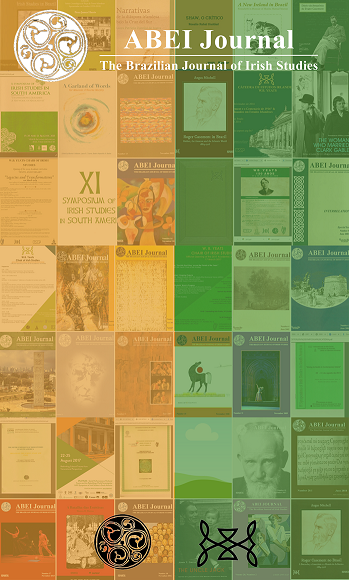Caoineadh: ethnopoetic representations in Irish panegyric tradition
DOI:
https://doi.org/10.37389/abei.v21i2.3365Keywords:
Poetry; Ethnopoetics; Panegyric.Abstract
It is argued here that certain literary representations related to Irish Studies, such as the oral tradition of the “Caoineadh”, or lament panegyric, as well as the “luadh”, or vigil songs, can be seen under the light of a somewhat new conceptual idea, given their marginal, if not liminal, nature, called ethnopoetics. Such epistemological tool can indeed allow the artistic representations of autochthonous practices to reflect more fully the worldview of societies to which art, as culture in general, is intrinsically linked to religious values as a whole, revealing the complexity of “primitive” as opposed to civilized. Hence, this paper evidences the Irish oral poetic tradition as its object of study, under the light of an ethnopoetic conceptualization, given both the marginal nature of its compositions, connected to a feminine force, and the liminal quality of its interdisciplinary representations, associated to the rites of passage.


